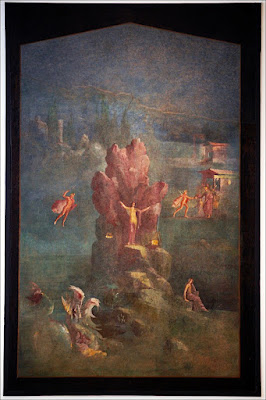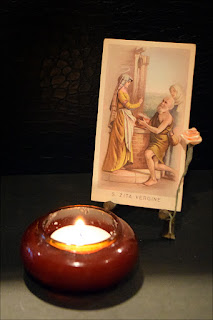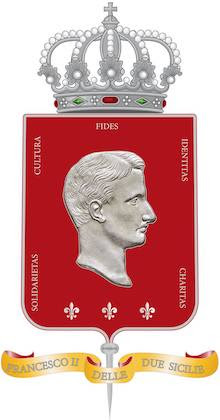Spoiler Alert!!!
“Unless we ourselves take a hand now, they’ll foist a republic on us. If we want things to stay as they are, things will have to change.” [1]
It seems the film industry can still produce quality shows after all. A veritable feast for the eyes, The Leopard—based on the celebrated 1958 novel Il Gattopardo by Giuseppe Tomasi di Lampedusa (1896–1957)—was surprisingly good. I use “surprisingly” because we live in an era where much of what's released is utterly unwatchable. While by no means a faithful adaptation of the book, the show does capture the essence of the story.
Premiering on Netflix on March 5, 2025, the limited historical series, consisting of six episodes, has garnered a generally positive reception. However, like me, very few of my friends have actually watched it, as we were concerned it might suffer the same dreadful fate as most modern remakes. It wasn't until a friend whose taste in movies (and television) aligns closely with mine recommended it that I felt compelled to give it a chance.
Set in 1860s Sicily, The Leopard depicts the decline of the Sicilian aristocracy and the rise of the merchant class during the Risorgimento. Navigating the changing social and political landscape, Don Fabrizio Corbera, the Prince of Salina, also known as the Leopard, “grapples with the collision between his family’s ancient privilege and revolutionary change.” [2]
From the outset, the show is visually striking and aurally pleasing. The cinematography and score are outstanding, and the sets, costumes, and performances are exceptional. The salons, balls, luncheons, and parlor games are portrayed with great élan, while the familial, political, and business interactions perfectly capture the life of the waning nobility in 19th-century Sicily. Interestingly, despite the opulent interiors and historical splendor of the Baroque palaces (such as Palazzo Valguarnera-Gangi), churches (like the Martorana), and piazzas (including Piazza Pretoria and Quattro Canti), I was most captivated by the timeless beauty and tranquility of the Sicilian countryside. I especially loved the scene where Tancredi and Concetta gazed at the stunning sunset amidst the ruins of Piana degli Albanesi.
For all that, I believe the show’s true strength lies in its incisive critique of Italian unification and the anti-traditional forces of secularism and materialism that brought ruin to the Italian peninsula. The Prince’s realization that he was the last Salina (despite his sons Paolo and Francesco, and his beloved but impoverished nephew Tancredi Falconeri) was particularly pronounced in the book. Nonetheless, we catch glimpses of it throughout the series, especially after Tancredi breaks his cousin Concetta’s heart and willingness to pimp out his beautiful new wife Angelica for career advancement and financial gain.
Initially depicted as a young and heroic idealist who joined the Garibaldini and suffered injuries for the Italian cause, Tancredi revealed himself to be an unscrupulous and vulgar cad. During a dinner party with Mayor Don Calogero Sedara and his daughter Angelica, Tancredi recounted how he purportedly injured his eye while protecting a group of nuns at a convent from a band of inebriated recruits. In an appalling act typical of revolutionaries, the abbess was thrown from a high window by the redshirts, yet Tancredi boasted, “Not one of the others was defiled or dishonored in any way.” Trying to inject humor into the grim situation, he crudely quipped, “Maybe it was simply because they were too old or unattractive.” Taking the jest too far, he added, “But Signorina Angelica, I’m certain things would have turned out very differently had you caught the novices’ attention. I doubt a single soldier from that whole battalion could have kept their hands off you.” Scandalized, Concetta storms off in a huff.

“What kind of fabrication is this? Not a single vote against? What has happened to my vote, Don Calogero? You know you could have won anyway, so why resort to lies? Is this how Italy is going to be born—like a deformed calf entering the world, corrupt and profane, just like you, Don Calogero Sedara? You’re as corrupt as the rest. You are dishonorable and will forever be nothing more than a deceitful liar.”
As the baying mob forcefully dragged the man away, he shouted defiantly, “You cannot silence me! You are all being deceived!”It seems that very little has changed today, and the slavish masses still put blind faith in that corrupt system.Certain overly sensitive guerrieri da tastiera ("keyboard warriors") have complained that the show perpetuates negative stereotypes of treachery and disloyalty supposedly associated with Southern Italians. In this instance, these claims are baseless and made by those who are merely seeking offense or are afraid of the unpleasant truth that Italian unification was achieved through subversive means.It is undeniable that Servant of God King Francesco II of the Two Sicilies was betrayed by his subjects, and corruption played a significant role in the success of the Risorgimento. Not unique to our people, every revolution, from Lucifer's onward, has involved some form of betrayal. The traitors of that time were no less guilty than the French who turned against King Louis XVI, the Austrians who betrayed Blessed Emperor Karl, or the Russians who abandoned Tsar Nicholas II. If betrayal had not occurred, how could the pirate Garibaldi possibly conquer the Kingdom of the Two Sicilies, or the double-dealing House of Savoy "legitimately" establish the Kingdom of Italy? If you still believe that a thousand rag-tag adventurers managed to defeat an army of 80,000 to 100,000 troops or that the plebiscites were conducted fairly, I have a bridge to sell you.Having only scratched the surface of this captivating story, I highly recommend watching The Leopard in its original Italian. This brings me to my main criticism: there isn’t enough Sicilian spoken. I suspect they did this to appeal to a broader audience, but as demonstrated by the popularity of shows like Gomorrah, this precaution was unwarranted, as the incorporation of the Neapolitan language did not detract from its appeal. While I appreciate the Netflix adaptation, it should come as no surprise that I consider the novel far superior—this is generally true in most cases. If you haven’t read the book yet, I strongly encourage you to. It's not regarded as one of the most important modern Italian novels for nothing. Similarly, it's unsurprising that I prefer Luchino Visconti's iconic 1963 film, Il Gattopardo, starring Burt Lancaster and the incomparable Claudia Cardinale. Although it is not without its flaws, the movie remains an irrefutable cinematic masterpiece. A friend calls it, “Our Gone With the Wind.”To conclude, I’d like to share one of my favorite quotes from the book that was regrettably omitted from the series:
“The tricolor! Tricolor indeed! They fill their mouths with these words, the rascals. What does that ugly geometric sign, that aping of the French mean, compared to our white banner with its golden lily in the middle? What hope can those clashing colors bring them?” [3]
~ By Giovanni di Napoli, April 23, Feast of San Giorgio
Notes:
[1] The Leopard, Giuseppe di Lampedusa, as spoken by Tancredi Falconeri
[2] Excerpt from the Netflix teaser.
[3] The Leopard, Giuseppe di Lampedusa, as spoken by Don Fabrizio Corbera, the Prince of Salina












































